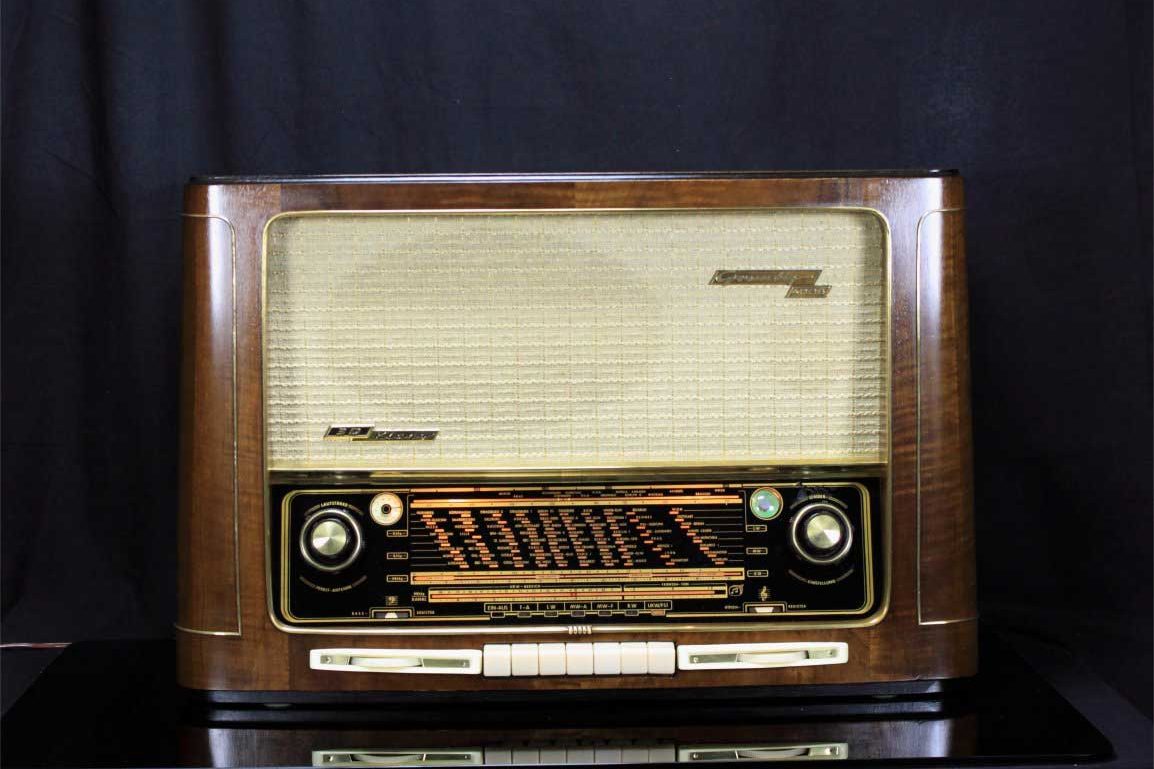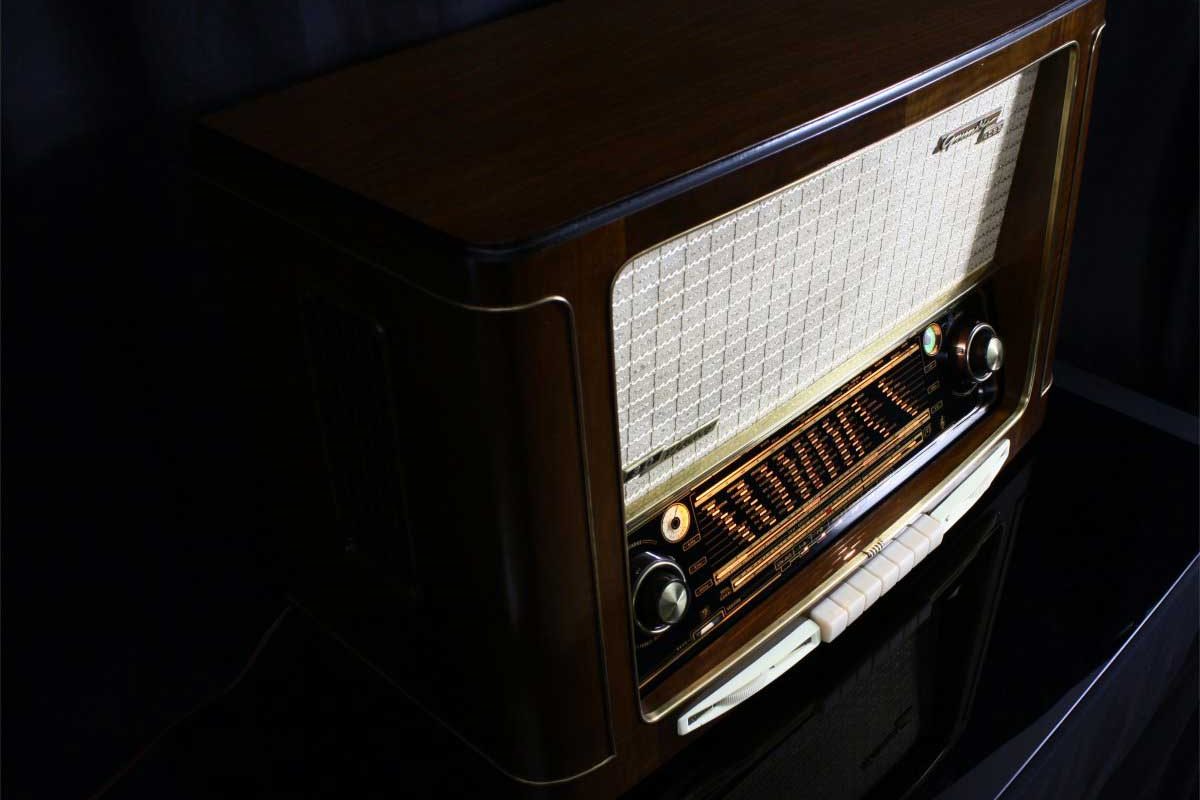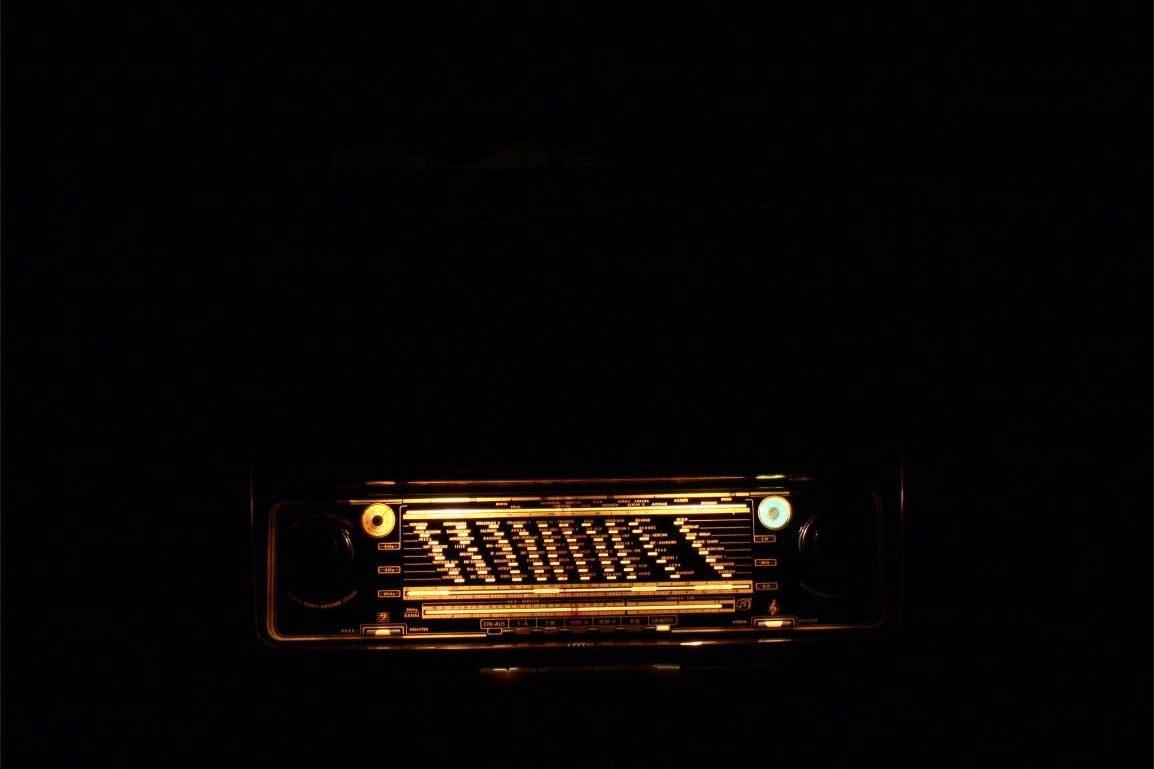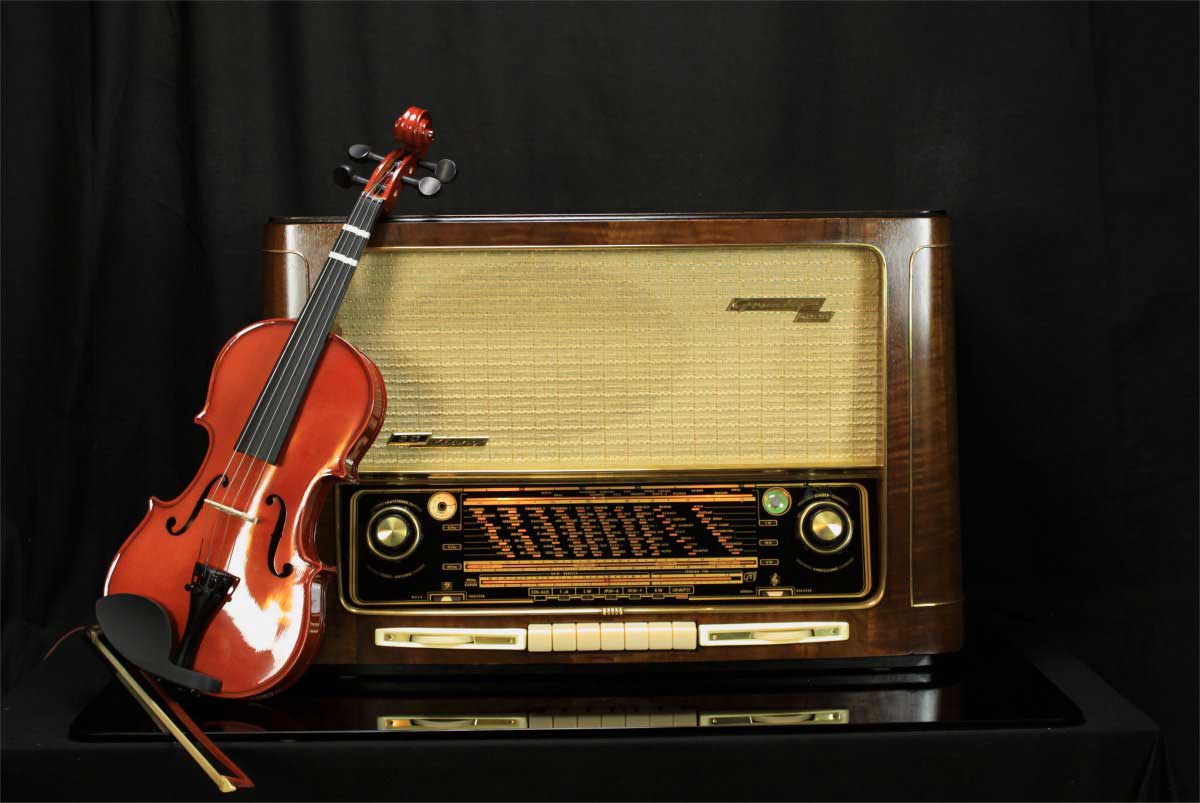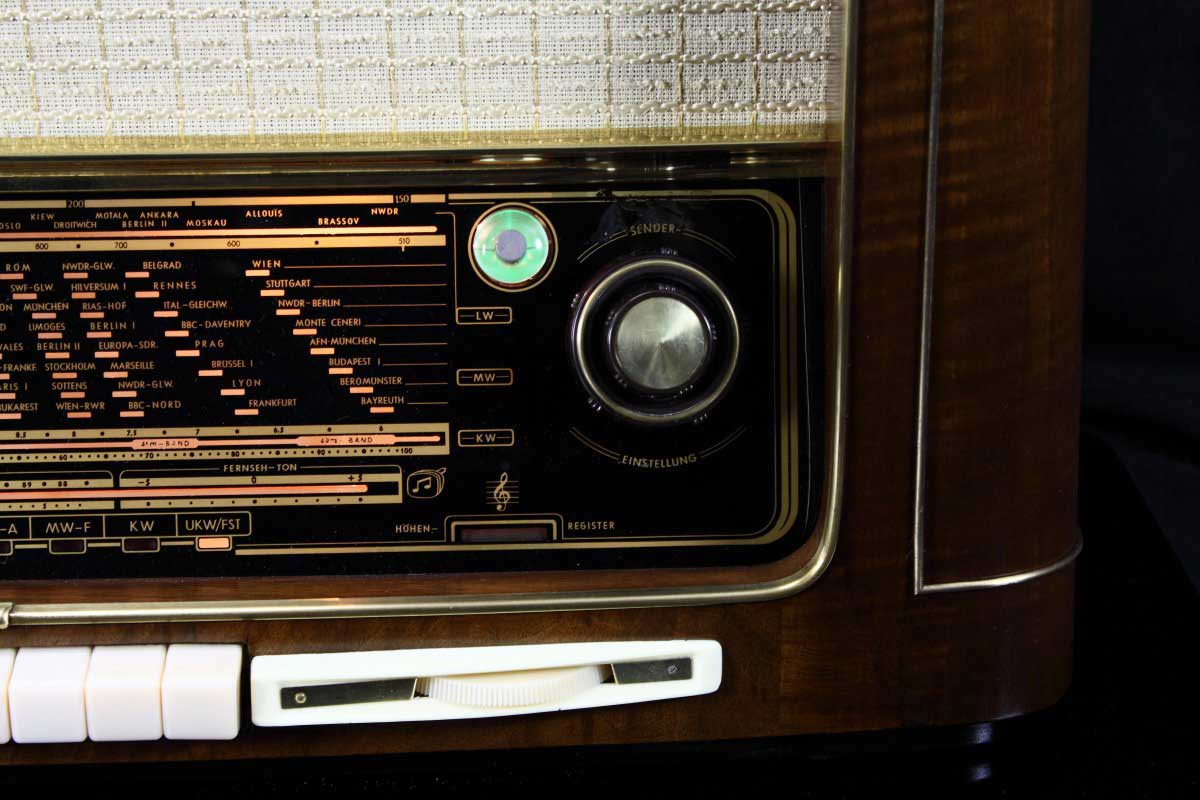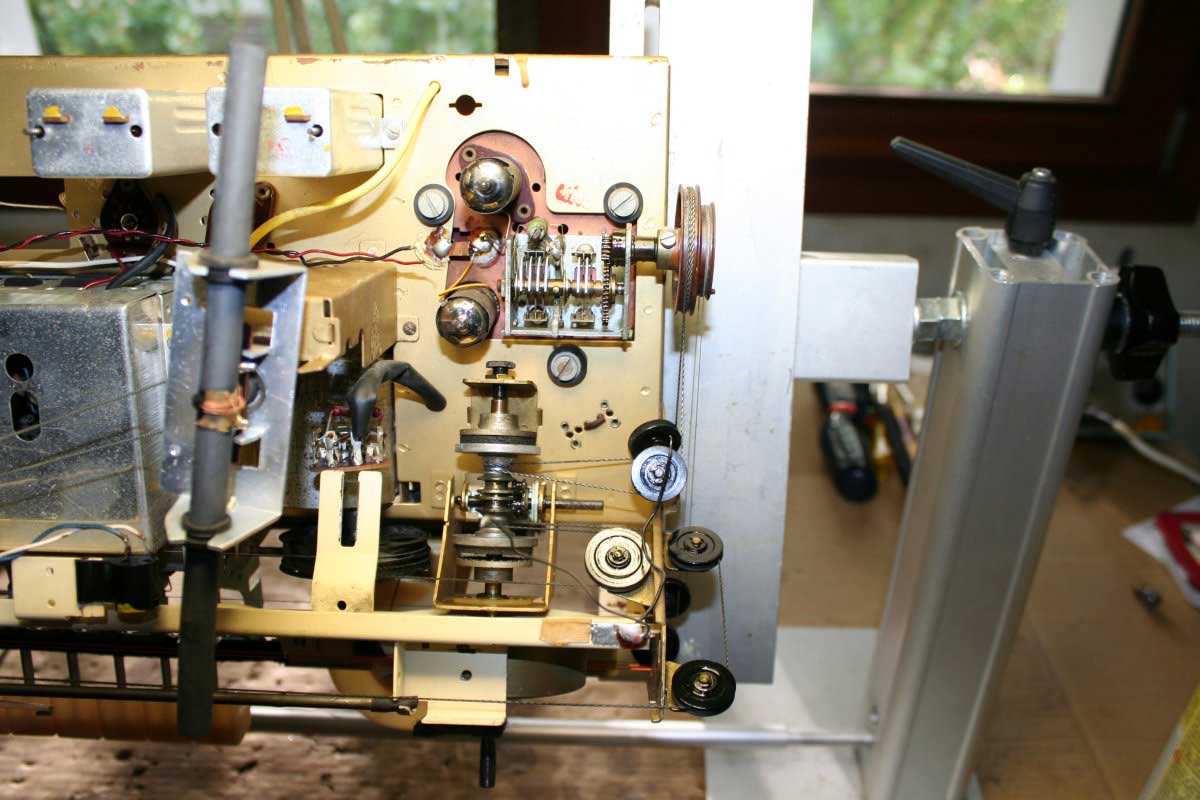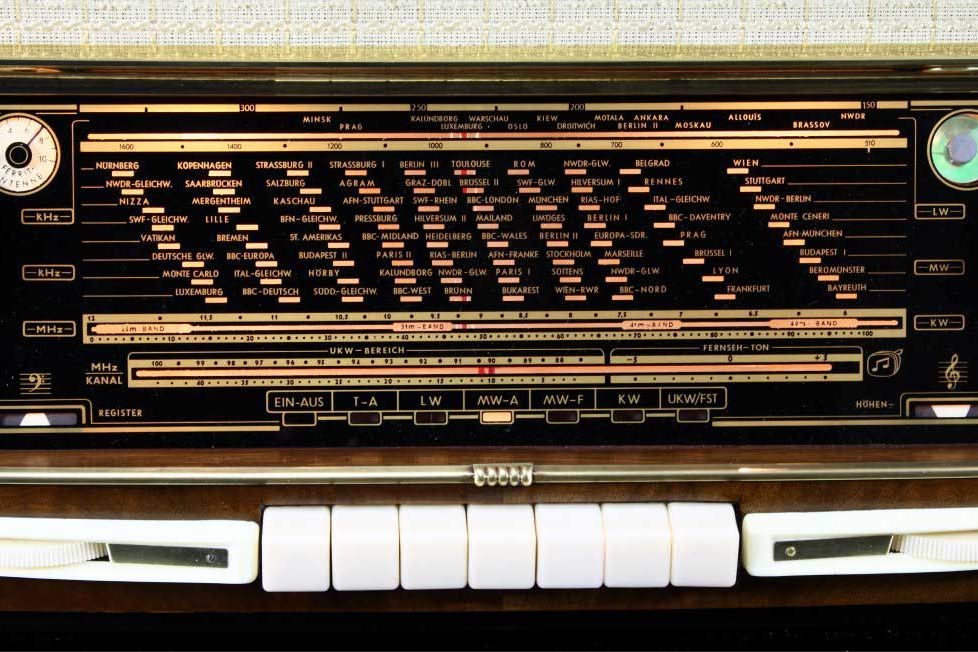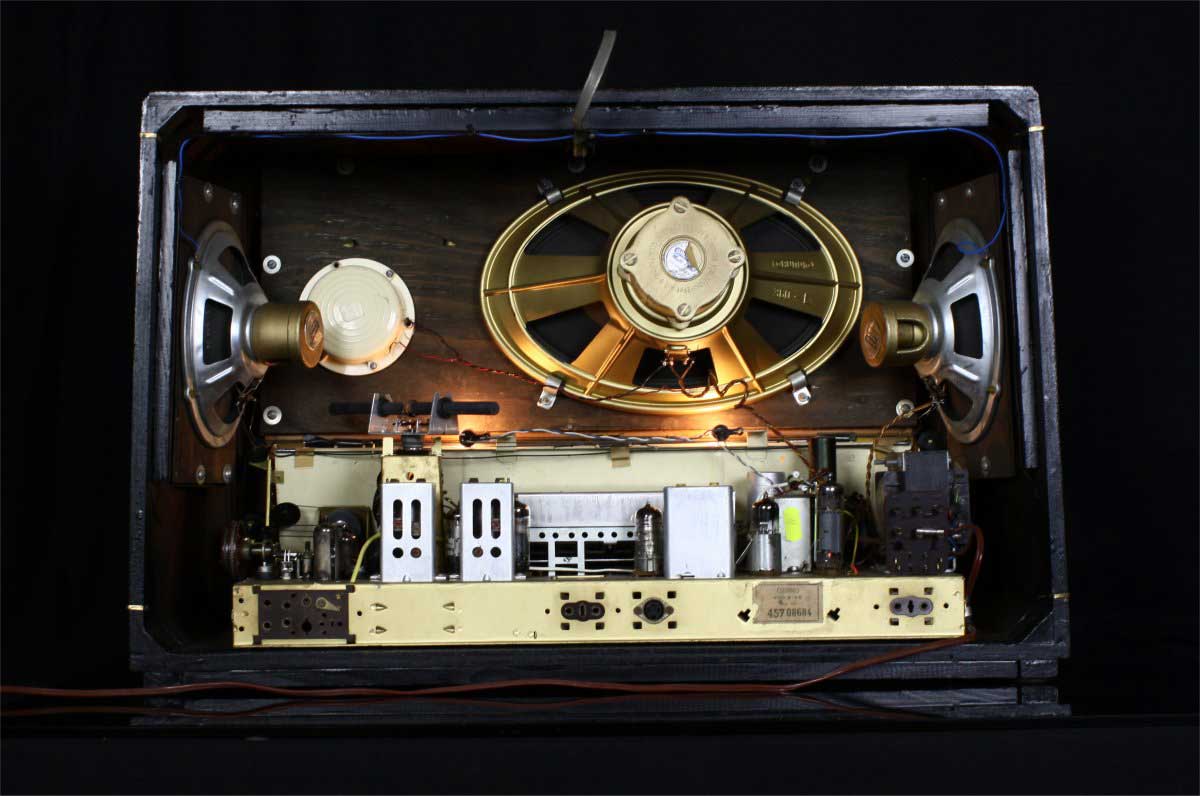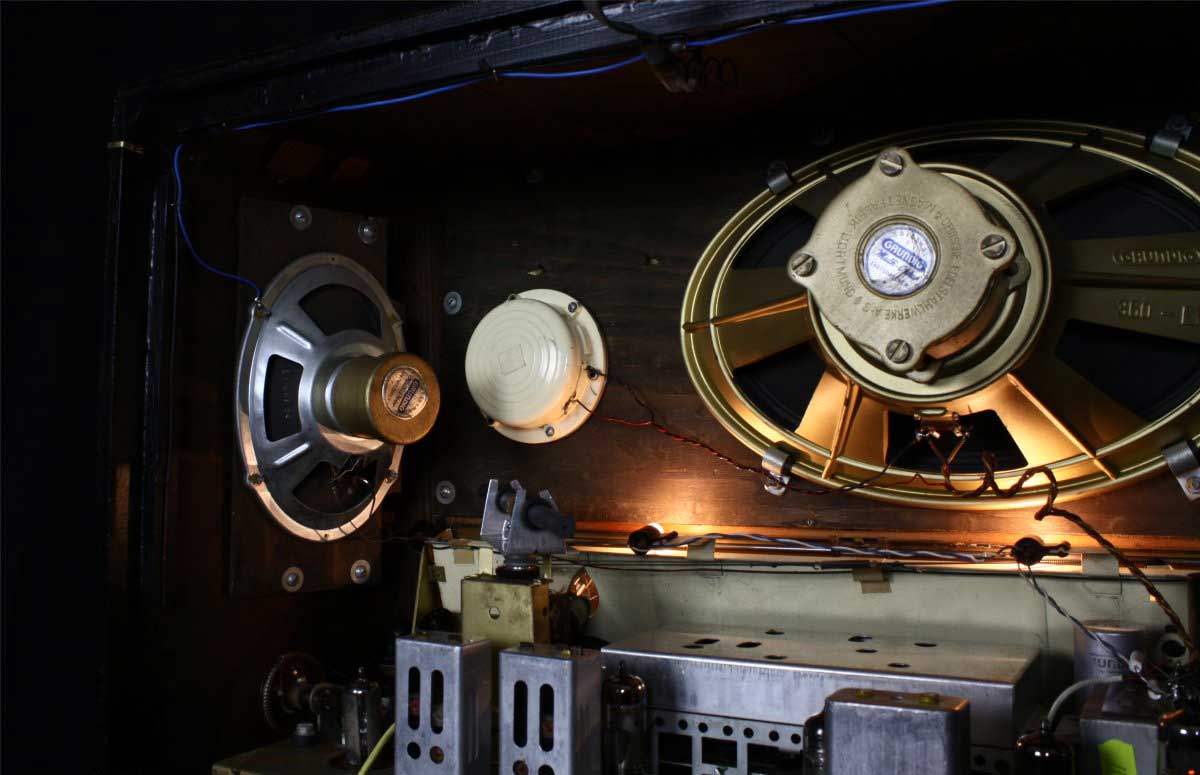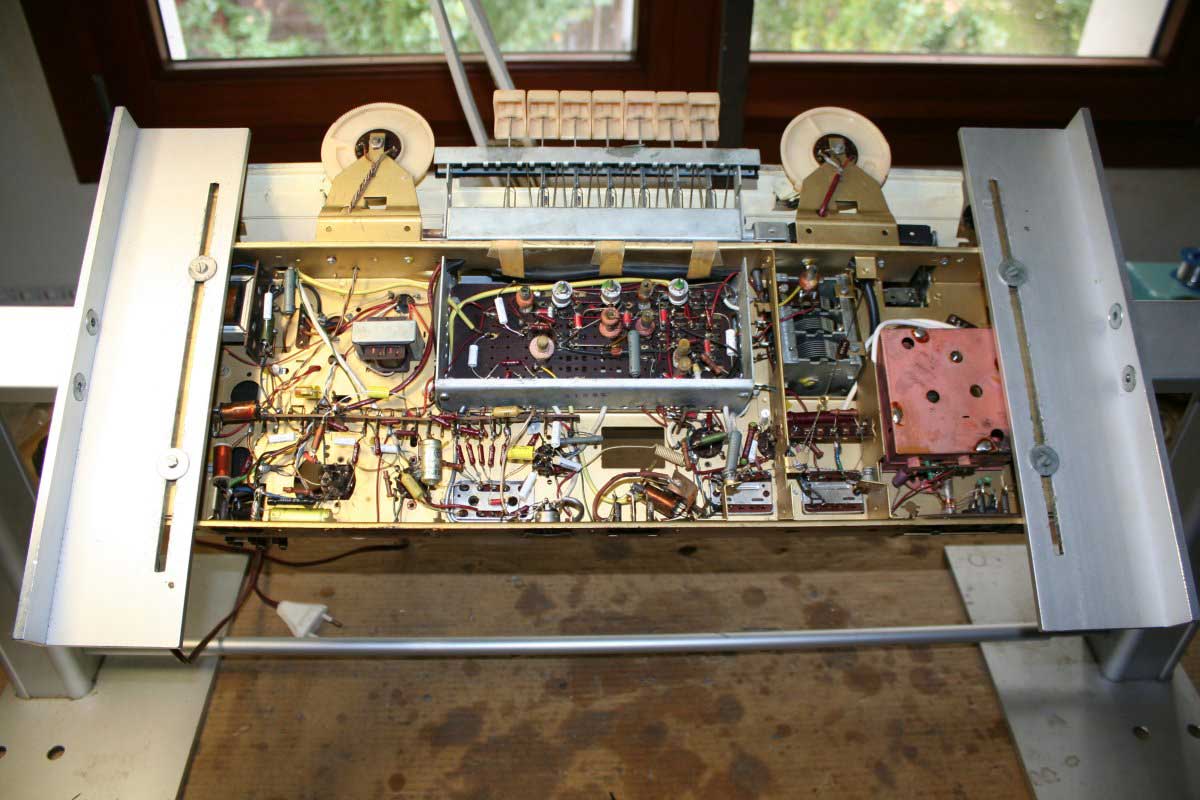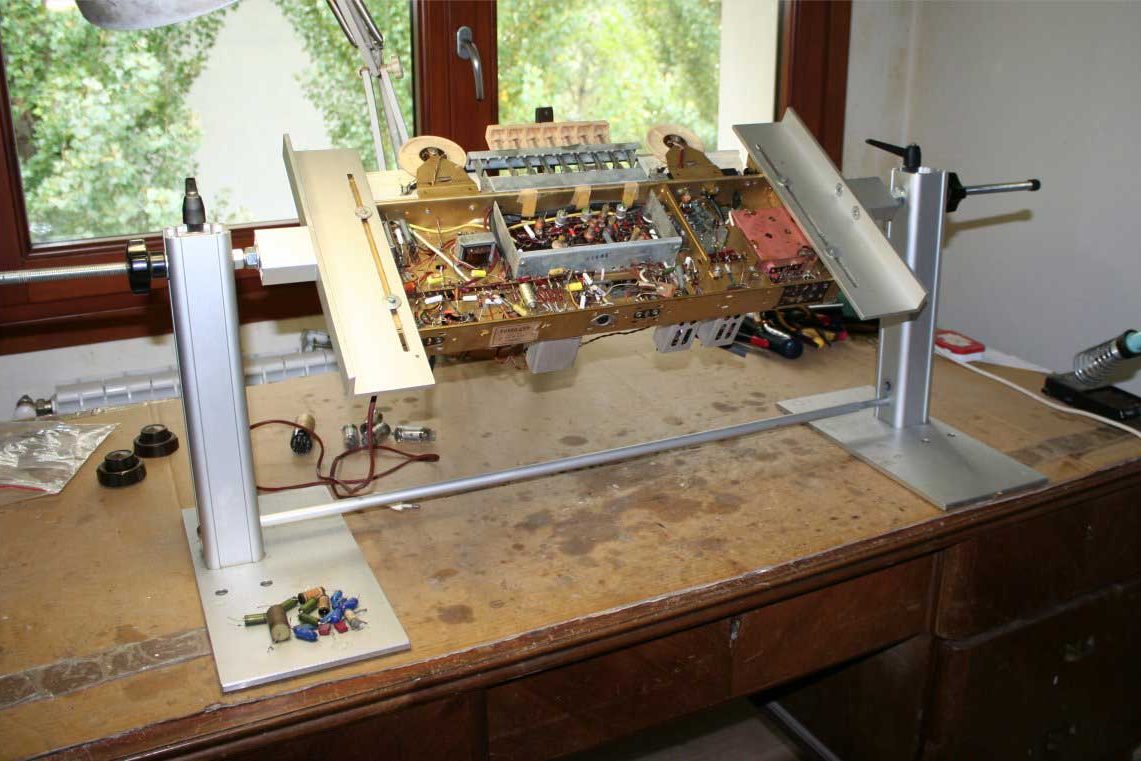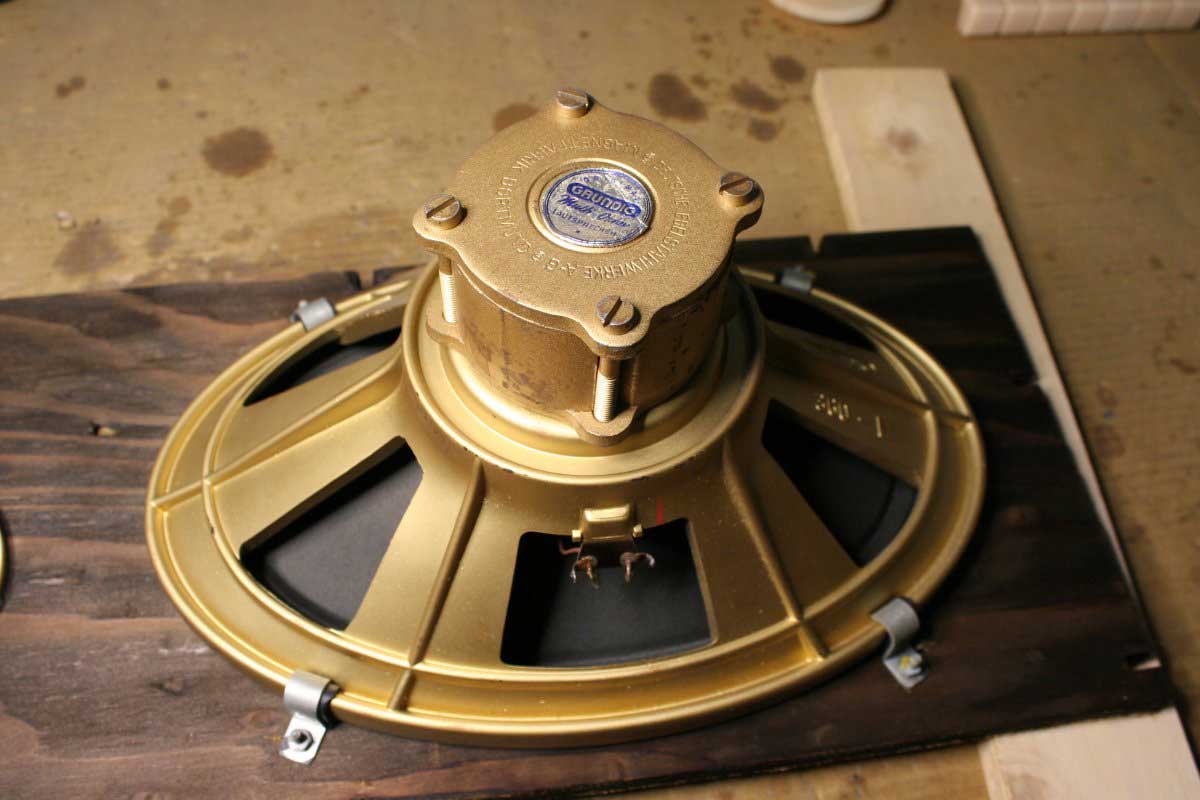 german radios - en
german radios - en
Grundig 4035W/3D – en
- 11th March 201723rd May 2017
- by giovanni
Grundig 4035W/3D
GRUNDIG 4035W/3D
Produced in 1954/55, the Grundig 4035W/3D substituted the glorious 4040W/3D.
It inherited the great sound created by the huge loudspeaker system and the Class A final stage.
The modern EL84 substituted the EL12 for a more precised and defined sound, if that is even possible. The EL84 is still considered one of the most musical tubes ever produced and it is still used in the High-End amplifiers.
Even in this case the device is equipped with a double output transformer and with an elaborate feedback system that has been designed to linearize the frequency response in the output stage.
The second output transformer is specific for the side loudspeaker so that you will not ever have saturation effects.
It is of course an expensive solution that will be abandoned in later production.
The tone controls are inserted in the feedback circuit so that the distorsioni is further reduced.
The FM converter stage is composed of two separate triodes as in the most prestigious SABAs.
This stage is amplified by an exclusive circuit equipped with an EF89 before continuing in Medium Frequency stage.
This peculiarity reduces the interferences, already very minimum, with the amplitude signal’s width fluctuations.
Tuning is therefore extremely stable.
All these expensive technical solutions create a high level sound quality. The 4035W/3D makes us incredibly satisfied.
BLUETOOTH
MULTI PLATFORM CONNECTION
TUBESOUND IMPROVEMENT
- Bluetooth receiver embed - The unit is equipped with a BLUETOOTH receiver powered directly by the receiver power supply. This makes it possible to control the amplifier from any external digital device as an IPAD, a Smartphone, or a sophisticated multimedia station. So you can hear your preferred web station or your lossesless file without cables on the room. Wireless Receiver can be equipped upon requests.
- Multi Platform Connection - A customized adaptation cable to connect any digital device as Iphone, Smartphone, Laptop, CD Player etc. will be provided with this radio. This special cable suits the different impedances between the modern equipment and the receiver. Furthermore the two stereo channels flow into one without increasing the load to the input unit.
HISTORY
1930 - At 22 years old Max Grundig begin a radio repair business.
1939 - The II world War start. Grundig works primarily for the Wehrmacht and repair of telecommunication equipment.
1945 - Immediately after the war, the demand for repair work was very great. Max Grundig built the first two Grundig appliances: the Tubatest tube tester and the Novatest testing device.
1947 - Start the sale of a kit radio, the Heinzelmann. The unit is the basis of success, sold more than 15,000 pieces.
1950 - Very high frequency (VHF) is introduced to Germany and places new demands on the industry. Grundig launches the 380 W on the market.
1952 - The first television channel starts up in Germany. After intensive research, Grundig launches the FS 080 onto the market. In the same year the first portable tape recorder Reporter 500 L is created.
1956 - After a lot of radio produced with progrssively high performances was produced the Concert Radio 5080 equipped with an equaliser, which has five controls and a visual display.
1965 - A new factory is established in Braga, Portugal. The Satellit 205 is one of many appliances in the Satellit series. This product marks the beginning of Grundig production of high-quality global receivers.
1970 - The Audiorama 7000 Hi-fi was produced, it has twelve dynamic speaker systems in one speaker.
1976 - The Reel Tape Recorder TS 1000 is equipped for semi-professional use.
1980 - The slim-line Hi-fi Tuner ST 6000 and the Monolith Hi-fi Dynamic Flat Top Antenna, which has 22 speaker systems, are two particularly popular appliances in the new hi-fi range.
1984 - After severe drop in sales Philips increased its stake in Grundig 31.6 percent and takes over the corporate management.
1997 - Philips pulls out of its involvement with Grundig.
2003 - The company files for bankruptcy.
2008 - Turkey's Koç Holding took full ownership of Grundig Multimedia B.V., the parent company of Grundig Intermedia GmbH in Nuremberg.
Courtesy of: Grundig
MAIN FEATURES
Year of production: 1954/55
Superheterodyne IF 460/10700
10 AM Circuits
11 FM Circuits
Wavebands:
LW, MW, SW, FM
Operating voltage (CA) 110; 125; 160; 220 Volts
1 Woofer
2 Midrange-Tweeters
1 Electrostatic Tweeter
Dimensions (LHD): 25.8 x 16.8 x 12.4 inch
Net weight: 36 lb 5.5 oz
8 Tubes:
2xEC92, EF89, ECH81,EAF42, EABC80, EL84, EM34
Optional module to receive the TV channels.
Rotating ferrite antenna for AM

TONE CONTROL WITH LEVEL INDICATION
The tones control system is very efficient. Above the large tone control knobs there is a band that lights up gradually indicating the emphasis on the band on which it acts.
A detail specific for “extreme” technical radios lovers: the high-tone control knob is linked to two thin ropes. One of them is for the position indicator of the control itself, whereas the other changes the position of the ferrite in the MF transformers modifying the inclination of the transformer’s curve.
By doing so high tones were attenuated/accentuated even before getting to the BF stage. Tone control was usually put into effect with the potentiometer on the tension amplifier stage
AERIALS
Inside the cabinet there is a dipole for FM reception and a ferrite rotating aerial for AM reception.
Ferrite aerial can be rotated from the outside to achieve a perfect tuning of the device in the AM.
In this picture see the rotation mechanism and the position indicator of the aerial.
The reception sensitivity with internal aerials is very good. This unit was in fact produced in a period when there were not many radio stations and those available fairly apart from each others.
Using an external aerial sensitivity is further increased.
SEPARATE CONTROL TUNING BETWEEN AM AND FM
The tuning system is another gem.
The unit is equipped with mechanisms for keeping separate the AM and FM bands.
The tuning knob is single but a selector switch commutes into cable systems (all in steel) and pulleys separated depending on the band.
The movement is transferred to both mechanisms with a system of pulleys and separated gears.
TUNING INDICATOR
The magic eye has of course been replaced.

BAND INDICATORS
With this beautiful keyboard type, called "a piano", you can not know out which button was pressed and which band you are listening.
Above each key there is an indicator that changes color when the appropriate key is selected for this reason .
On the left you can find the volume control (with incorporated loudness) and the ferrite antenna’s rotation control.
The AM scale for short, medium, long an FM waves.
On the lower left side there are the ON/OFF, record player, the long, medium, short and FM waves.
Symmetrically to the AM aerial indicator we find the tuning indicator.
Lastly the tuning knob is supported by a big fly-wheel which creates a pleasant movement.
Below there are the two bass and high control knobs.

REAR SIDE
Output for external speakers.
Socket for recorder (tonbandgerat).
Turntable input (Tonabnehmer)
AM and FM aerial inputs and ground socket.
RESTORING WORKS
THE USUAL AMAZING LAST IMAGE



